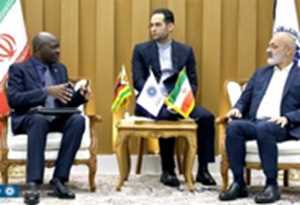
Rutendo Mazhindu- Zim Now Reporter
Zimbabwe and Botswana have committed to transforming their diplomatic ties into concrete action through strengthened cooperation in tourism, environmental conservation, and cross-border travel.
This follows a high-level meeting in Harare between Botswana’s Minister of Environment and Tourism, Winter Boipuso Mmolotsi, and Zimbabwe’s Minister of Information, Publicity and Broadcasting Services, Dr Jenfan Muswere. The engagement was held under the framework of an existing Memorandum of Understanding between the two countries.
At the heart of the discussions was a shared vision to harness natural heritage as a driver of regional development and economic inclusion. From easing immigration rules for tourists to aligning conservation strategies, both governments are now pushing for collaboration that delivers real outcomes.
“Wildlife knows no borders,” said Minister Mmolotsi. “We are available and ready to work closely with Zimbabwe to ensure our shared natural resources are protected and benefit our communities.”
Related Stories
Among the top priorities discussed were joint tourism marketing, technical cooperation on biodiversity, and support for local communities through shared conservation initiatives.
Muswere described the meeting as a turning point for the region. “We are working towards relaxed immigration protocols, joint tourism marketing and shared strategies to manage our natural heritage,” he said. “This cooperation will go beyond words and deliver real benefits for our people.”
The Kavango-Zambezi Transfrontier Zim, Botswana Cement Tourism, Conservation Ties Area- one of the world’s largest conservation landscapes — was spotlighted as a key zone where Zimbabwe and Botswana could lead regional efforts. The ministers agreed that success in such cross-border areas hinges on policy alignment and coordinated action.
Botswana’s globally admired low-volume, high-value tourism approach and Zimbabwe’s renowned destinations like Victoria Falls and Hwange National Park present opportunities for a complementary tourism strategy.
Looking ahead, the two nations will explore the possibility of a shared visa regime, harmonised tourism standards, and joint promotional campaigns to position Southern Africa as a seamless eco-tourism destination.
The ministers also noted that environmental and tourism collaboration could strengthen bilateral relations and help both countries recover from the long-term impact of the COVID-19 pandemic on global travel.




















Leave Comments